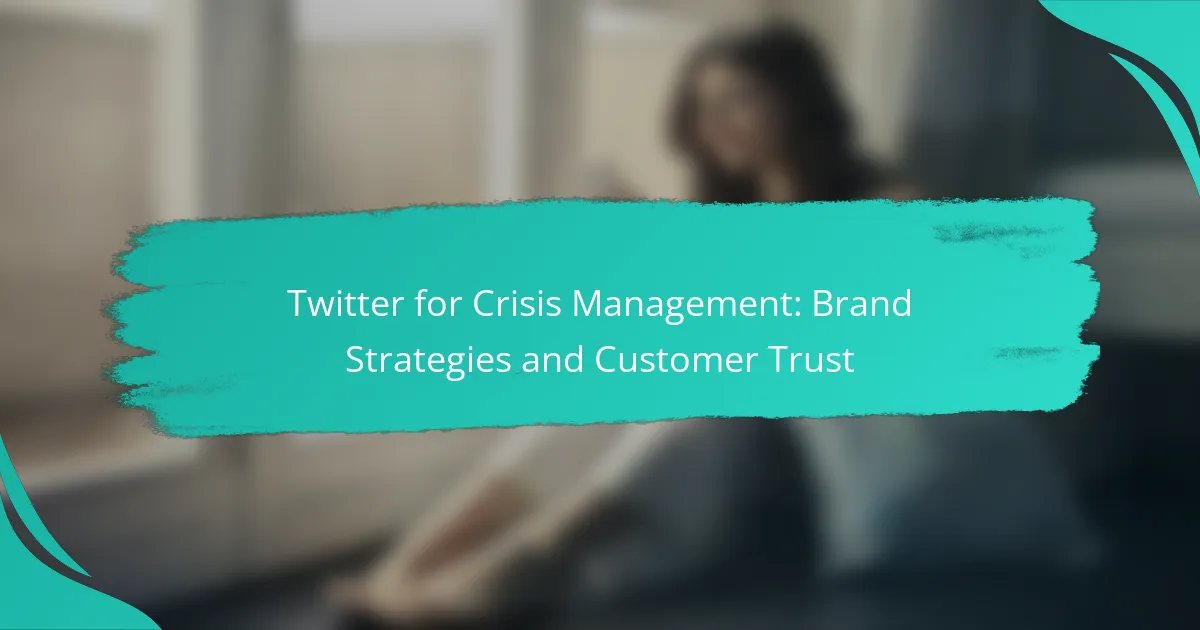In times of crisis, Twitter serves as a vital tool for brands to enhance trust and maintain customer confidence through immediate and transparent communication. By engaging proactively and responding rapidly to concerns, brands can effectively manage their reputation and reassure their audience. Implementing these strategies not only mitigates potential damage but also fosters a deeper connection with customers during challenging times.

How can Twitter enhance brand trust during crises?
Twitter can significantly enhance brand trust during crises by facilitating immediate communication and fostering transparency. By using the platform effectively, brands can address concerns, provide updates, and engage with their audience in real-time, which is crucial for maintaining customer confidence.
Real-time communication
Real-time communication on Twitter allows brands to respond swiftly to emerging situations, which is vital during a crisis. Timely updates can prevent misinformation and reassure customers that the brand is actively managing the issue.
Brands should monitor Twitter for mentions and relevant hashtags to engage with customers directly. Quick responses can help mitigate negative sentiment and demonstrate accountability.
Transparent messaging
Transparent messaging is essential for building trust during crises. Brands should communicate openly about what they know, what they are doing, and any uncertainties they face.
Using clear language and avoiding jargon can help ensure that messages are understood by all. Regularly addressing customer concerns and providing honest updates can strengthen the brand’s credibility.
Engagement with stakeholders
Engaging with stakeholders on Twitter can enhance trust by showing that a brand values its community. This includes responding to customer inquiries, acknowledging feedback, and participating in conversations relevant to the crisis.
Brands should consider using polls or questions to gauge public sentiment and adjust their messaging accordingly. This two-way communication fosters a sense of partnership between the brand and its audience.
Consistent updates
Consistent updates are crucial for keeping customers informed and maintaining trust. Brands should establish a regular cadence for sharing information, even if there are no new developments.
Using a consistent tone and format for updates can help customers feel more secure. Brands might consider creating a dedicated Twitter thread to compile all relevant updates for easy access.
Utilizing Twitter Spaces for discussions
Twitter Spaces can be an effective tool for fostering open discussions during a crisis. By hosting live audio conversations, brands can engage directly with their audience and address concerns in real-time.
Inviting experts or stakeholders to participate can enhance the credibility of the discussion. This interactive format allows for immediate feedback and can help clarify complex issues, reinforcing trust in the brand’s commitment to transparency and engagement.
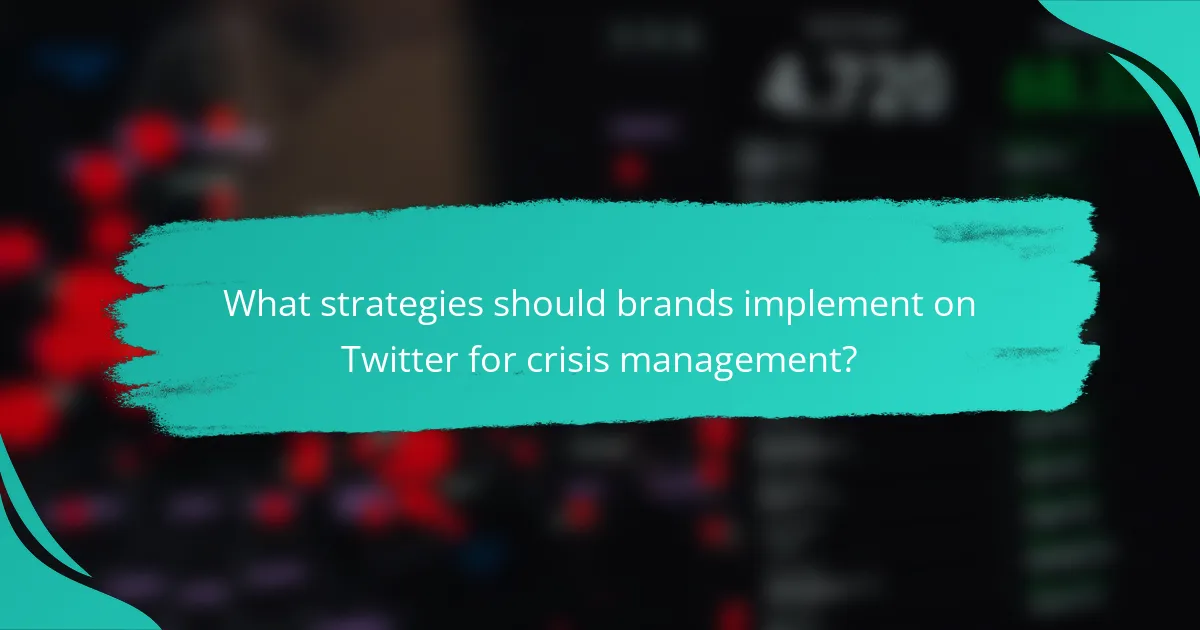
What strategies should brands implement on Twitter for crisis management?
Brands should focus on proactive engagement, transparent communication, and rapid response when managing crises on Twitter. Implementing these strategies can help maintain customer trust and mitigate potential damage to brand reputation.
Proactive monitoring of mentions
Proactive monitoring of mentions on Twitter allows brands to identify potential crises before they escalate. Utilize social listening tools to track keywords, hashtags, and brand mentions, ensuring that you can respond quickly to emerging issues.
Set up alerts for significant spikes in mentions or negative sentiment. This enables you to address concerns promptly, reducing the likelihood of misinformation spreading and maintaining customer confidence.
Creating a crisis response team
A dedicated crisis response team is essential for effective management during a crisis. This team should include members from various departments, such as PR, customer service, and legal, to ensure a well-rounded approach to communication.
Establish clear roles and responsibilities within the team, allowing for swift decision-making and coordinated responses. Regular training and simulations can prepare the team for real-life scenarios, enhancing their effectiveness during actual crises.
Developing a crisis communication plan
A crisis communication plan outlines how your brand will communicate during a crisis. This plan should include key messages, designated spokespersons, and protocols for escalating issues within the organization.
Regularly review and update the plan to reflect changes in your brand, audience, or industry. Having a well-defined strategy can streamline communication efforts and ensure consistency across all channels, including Twitter.
Leveraging Twitter polls for feedback
Twitter polls can be an effective tool for gathering real-time feedback during a crisis. Use polls to gauge customer sentiment and understand their concerns, allowing you to tailor your responses accordingly.
Keep polls simple and focused on specific issues. This not only engages your audience but also demonstrates that you value their opinions, fostering trust even in challenging situations.
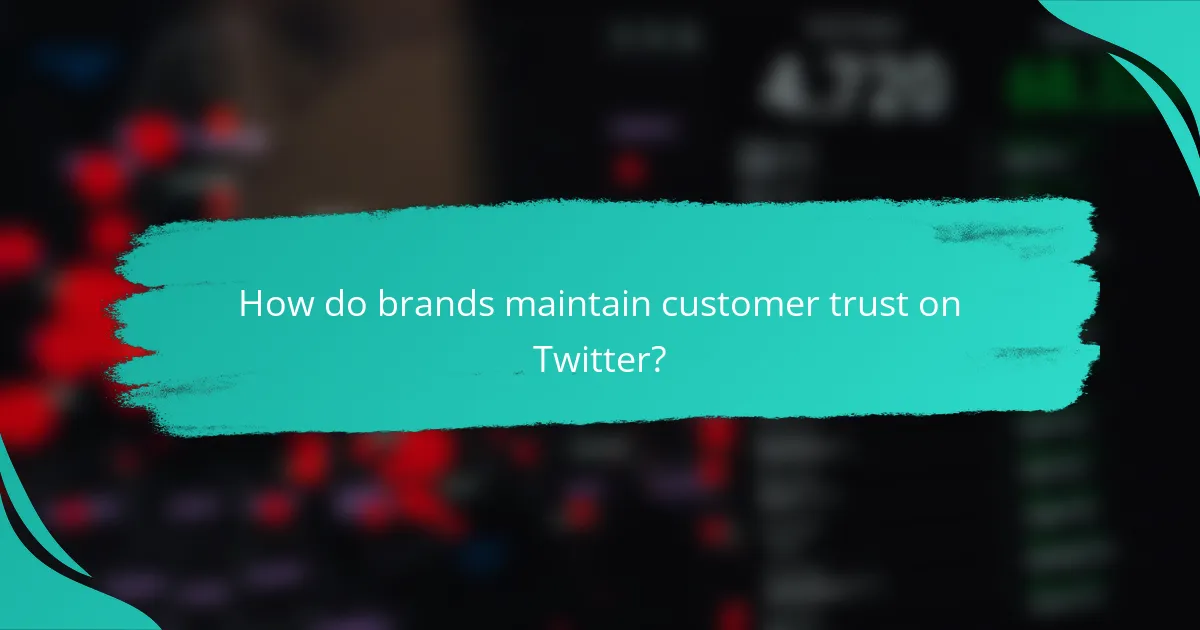
How do brands maintain customer trust on Twitter?
Brands maintain customer trust on Twitter by being transparent, responsive, and empathetic during crises. Effective communication strategies are essential to reassure customers and uphold brand integrity.
Addressing concerns promptly
Timely responses to customer inquiries and concerns are crucial for maintaining trust. Brands should monitor their Twitter feeds regularly to identify and address issues as they arise, ideally within minutes or a few hours.
Implementing a dedicated crisis management team can streamline this process. This team should be trained to respond quickly and effectively, ensuring that no customer feels ignored during critical times.
Providing accurate information
Accuracy is vital when sharing information during a crisis. Brands must verify facts before posting updates to avoid spreading misinformation, which can damage credibility.
Utilizing official sources and providing clear, concise updates helps customers feel informed and secure. Consider creating a dedicated thread for crisis updates, making it easy for followers to find the latest information.
Showcasing empathy and support
Demonstrating empathy is key to building trust during challenging situations. Brands should acknowledge customer feelings and concerns, showing that they understand the impact of the crisis on their audience.
Sharing supportive messages, offering assistance, or even highlighting community efforts can strengthen the emotional connection with customers. Simple gestures, like expressing gratitude for patience, can go a long way in fostering loyalty.
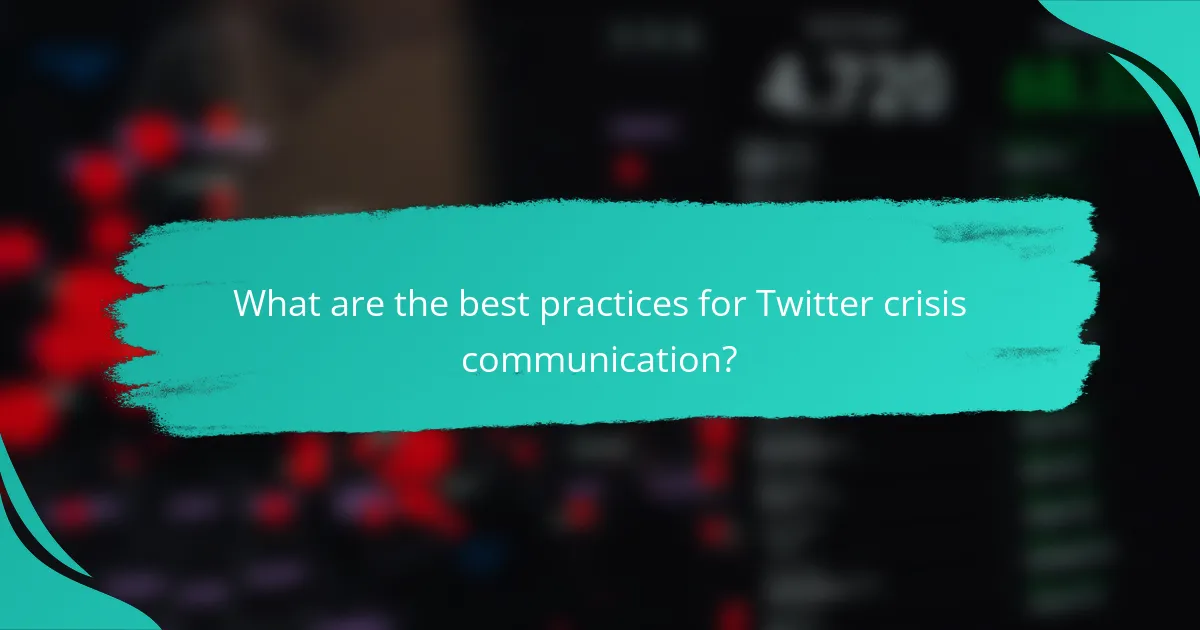
What are the best practices for Twitter crisis communication?
Effective Twitter crisis communication involves timely, transparent, and consistent messaging to maintain brand trust. Brands should focus on establishing a clear voice, utilizing visuals, and collaborating with influencers to navigate crises successfully.
Establishing a clear voice
A clear and consistent voice is crucial during a crisis. Brands should define their tone—whether empathetic, authoritative, or reassuring—before a crisis occurs. This helps ensure that all communications resonate with the audience and reflect the brand’s values.
During a crisis, it’s essential to avoid jargon and overly technical language. Instead, use straightforward language that everyone can understand. For example, if a product recall is necessary, clearly state the issue and the steps customers should take.
Using visuals to convey messages
Visuals can enhance understanding and engagement during a crisis. Infographics, images, and videos can quickly convey complex information, making it easier for audiences to grasp the situation. For instance, a short video explaining safety measures can be more effective than a lengthy text post.
When using visuals, ensure they are high-quality and relevant. A well-designed graphic can summarize key points, while a live video can provide real-time updates. Always include captions or text overlays to make the content accessible to all users.
Collaborating with influencers
Partnering with influencers can amplify your crisis communication efforts. Influencers can help disseminate your message to a broader audience, lending credibility and trust to your brand. Choose influencers who align with your brand values and have a genuine connection with their followers.
When collaborating, provide influencers with clear guidelines on the messaging and tone you want to convey. This ensures consistency across all platforms. Monitor their posts to engage with the audience and address any concerns promptly, reinforcing your commitment to transparency and customer trust.
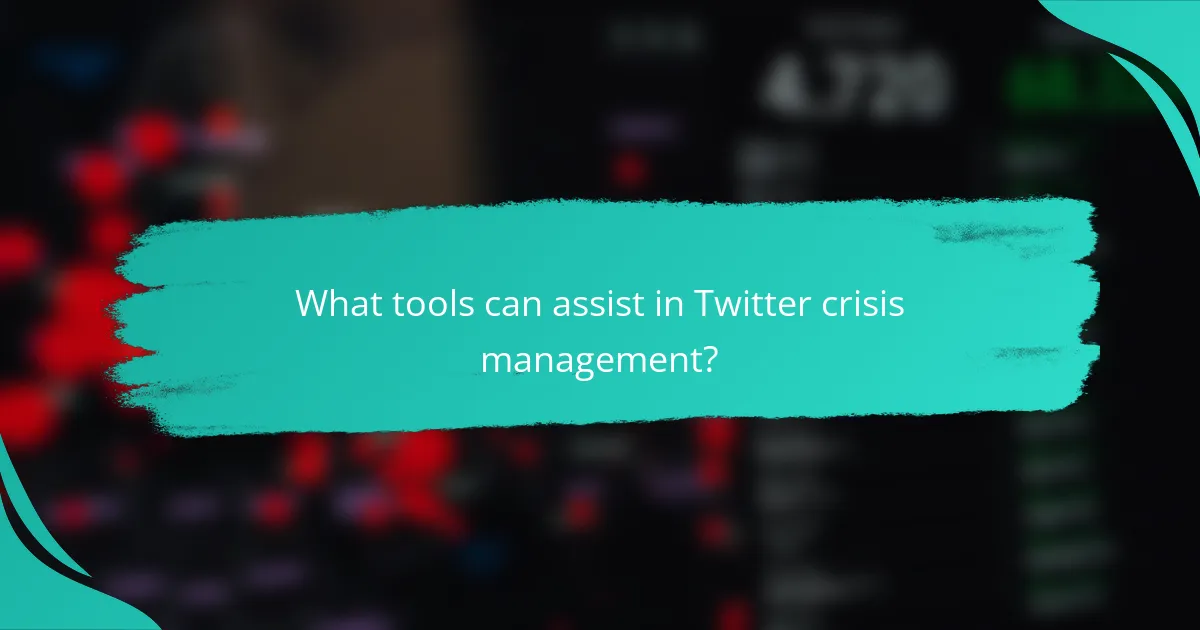
What tools can assist in Twitter crisis management?
Effective Twitter crisis management relies on tools that streamline communication, analyze sentiment, and schedule posts. These tools help brands respond swiftly and maintain customer trust during challenging situations.
Hootsuite for scheduling
Hootsuite is a powerful tool for scheduling tweets, allowing brands to plan their messaging in advance. This is crucial during a crisis when timely communication is essential. By scheduling posts, brands can ensure that their responses are consistent and strategically timed.
When using Hootsuite, consider creating a crisis communication plan that includes pre-approved messages. This can help avoid delays in response time. Additionally, monitor scheduled posts to ensure they remain relevant as the situation evolves.
Brandwatch for sentiment analysis
Brandwatch offers robust sentiment analysis, enabling brands to gauge public opinion in real-time during a crisis. By analyzing tweets and mentions, companies can identify trends and adjust their messaging accordingly. This insight is vital for understanding customer concerns and tailoring responses to address them.
Utilizing Brandwatch effectively involves setting up alerts for specific keywords related to the crisis. This allows brands to track sentiment shifts and respond proactively. Regularly reviewing sentiment data can help in refining communication strategies and rebuilding trust with customers.
